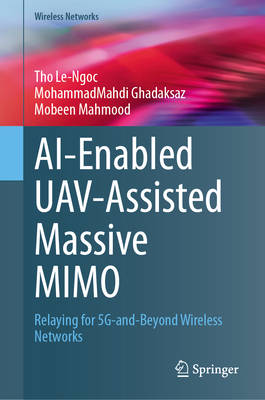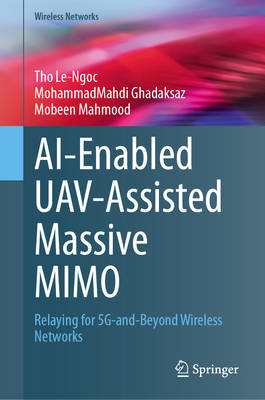
- Afhalen na 1 uur in een winkel met voorraad
- Gratis thuislevering in België vanaf € 30
- Ruim aanbod met 7 miljoen producten
- Afhalen na 1 uur in een winkel met voorraad
- Gratis thuislevering in België vanaf € 30
- Ruim aanbod met 7 miljoen producten
Zoeken
Ai-Enabled Uav-Assisted Massive Mimo
Relaying for 5g-And-Beyond Wireless Networks
Tho Le-Ngoc, Mohammadmahdi Ghadaksaz, Mobeen Mahmood
€ 305,45
+ 610 punten
Omschrijving
The authors explore various Unmanned Aerial Vehicle (UAV)-assisted massive Multiple-Input and Multiple-Output (MIMO) relaying systems designed for 5G-and-Beyond wireless networks. This book also addresses scenarios where a direct connection between a base station and users is blocked, and a UAV acts as a relay to ensure seamless connectivity. The goal is to maximize the total achievable rate by solving key optimization problems in UAV placement, power allocation, and beamforming design. To tackle these challenges, the authors present novel artificial intelligence (AI)-driven solutions that achieve near-optimal performance in complex environments. The first part introduces particle swarm optimization (PSO), a nature-inspired algorithm, for both single-user and multi-user massive MIMO settings, extending to multiple-UAV relay configurations. Our results demonstrate that PSO-based approaches can effectively enhance network capacity and coverage. The second part focuses on reducing computational complexity, while maintaining high performance. The authors develop deep learning (DL)-based approaches, from supervised learning for UAV placement and power allocation to deep reinforcement learning for trajectory optimization in dynamic conditions. Numerical evaluations confirm that these DL-based methods achieve reduced runtime without sacrificing achievable rates. This book targets researchers, advanced-level students and engineers interested in the challenges and practical solutions for UAV-assisted MIMO communications in wireless networks. Professionals working in wireless communications focused on this topic will also want to purchase this book.
Specificaties
Betrokkenen
- Auteur(s):
- Uitgeverij:
Inhoud
- Aantal bladzijden:
- 167
- Taal:
- Engels
- Reeks:
Eigenschappen
- Productcode (EAN):
- 9783032078711
- Verschijningsdatum:
- 16/12/2025
- Uitvoering:
- Hardcover
- Formaat:
- Genaaid
- Afmetingen:
- 155 mm x 235 mm

Alleen bij Standaard Boekhandel
+ 610 punten op je klantenkaart van Standaard Boekhandel
Beoordelingen
We publiceren alleen reviews die voldoen aan de voorwaarden voor reviews. Bekijk onze voorwaarden voor reviews.








